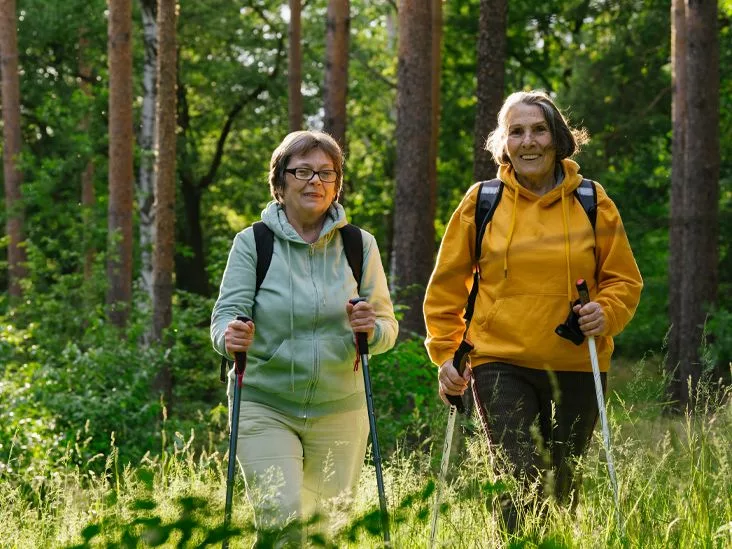Hey there! If you’ve ever taken an unexpected tumble or felt like your walk just isn’t as smooth as it used to be, you’re definitely not alone. A lot of older adults discover that a little “reset” to the way they walk can bring back confidence, independence, and a lot less worrying about falls. Below you’ll find a friendly, step‑by‑step guide to the gait training exercises that really work, plus tips on staying safe and keeping motivation high.
All the moves I’m sharing are backed by physical‑therapy research (think Healthline, Verywell Health, and Flint Rehab) and are designed to boost balance, strength, and endurance while keeping fall risk low. Ready? Let’s lace up those shoes and get moving together.
Why Gait Matters
First off, what exactly is “gait”? In plain English, it’s simply the pattern of how you walk. As we age, muscles, joints, and the nervous system can change, and those shifts often show up in our gait. A wobbly or uneven stride can lead to trips, bruises, or even more serious injuries.
Improving your gait does more than just steadier steps—it supports better heart health, keeps joints from over‑working, and helps maintain the freedom to do the things you love, from gardening to dancing at a family gathering.
Benefits vs Risks
The upside of regular gait training is huge:
- Stronger lower‑body muscles
- Sharper balance and coordination
- Higher cardiovascular stamina
- Greater confidence on uneven surfaces
- Reduced chance of falls—some studies show up to a 30 % drop in fall rates.
The flip side is that, like any exercise, doing it wrong can cause strain or injury. That’s why a brief safety checklist is worth your time:
- Get a quick medical clearance if you have recent surgery or heart issues.
- Wear supportive, non‑slip shoes.
- Choose a clutter‑free area with a sturdy chair or railing nearby.
- Start slow—focus on form before adding reps.
According to a study published in the Journal of Geriatric Physical Therapy, adherence to these safety steps makes injuries from gait training rare.Read the study.
Balance Drills
Single‑Leg Stance
Stand behind a chair, hold the back for support, and lift one foot off the ground. Try to hold for 10‑15 seconds, then switch sides. As you get comfortable, let go of the chair and increase the hold time.
Heel‑to‑Toe Walk
Imagine you’re drawing a straight line with your foot. Place the heel of one foot directly in front of the toe of the other foot. Walk 10 steps forward, turn around, and repeat. This tiny challenge sharpens proprioception—the sense that lets your brain know where your limbs are.
Side‑Step & Shuffle
Stand with feet hip‑width apart, then step laterally, bringing the opposite foot to meet it. Shuffle back and forth for 30 seconds. It’s a low‑impact way to fire up those hip abductors, which are key for lateral stability.
Strength Moves
Mini‑Squats
Stand with a chair behind you for safety. Lower yourself as if you’re sitting, stopping when your thighs are parallel to the floor, then rise. Aim for 12‑15 reps. Use a resistance band around your thighs for extra challenge.
Straight‑Leg Raises
Lie on your back, one knee bent, the other leg straight. Lift the straight leg to about 6‑8 inches, hold for two seconds, then lower. Do 10 reps each side. This isolates the quadriceps without stressing the knees.
Step‑Ups
Find a low step (6‑8 inches). Place one foot on the step, push through the heel to stand, then step down with the same foot. Complete 10 reps, then switch legs. If you feel wobbly, hold onto a railing.
Mobility Work
Ankle Pumps & Calf Stretch
Sit on a chair, point your toes down, then pull them toward you—repeat for two minutes. Follow with a towel stretch: loop a towel around the ball of your foot, gently pull toward you, and hold for 10 seconds each side. These moves keep the ankle joint supple, a cornerstone of a smooth gait.
Hip Flexor Marches
Stand or sit, then lift one knee toward your chest, lower, and repeat on the other side. Do this for 30 seconds, focusing on a tall spine and relaxed shoulders. It helps with the “swing” phase of walking.
Crouched Walking (Optional)
Research from Mission Gait shows that a slow, crouched gait can boost hip symmetry and cut knee hyperextension. If you’re feeling adventurous and have a PT’s okay, try walking in a shallow crouch for short intervals—think 20‑seconds on, 40‑seconds rest.
Functional Walking
Obstacle Negotiation
Place a small pillow or rolled towel on the floor. Practice stepping over it, alternating lead legs. This mimics real‑world hazards like a curb or a garden hose.
Timed “Walk‑and‑Sit” Circuit
Walk 10 meters, sit down on a sturdy chair, stand up, and repeat three times. It reinforces the transition from sit‑to‑stand—a common stumbling point for many seniors.
Assistive‑Device Practice
If you use a cane or walker, incorporate it into every drill. Practice turning, backing up, and navigating tight spaces. Proper device use can actually increase independence rather than limit it.
Personal Program
Now that you’ve seen the toolbox, let’s piece together a simple weekly plan. Start by doing a quick home gait screen: walk a short distance and notice if you feel stable, if one side feels weaker, or if you’re limping.
Set a SMART goal—Specific, Measurable, Achievable, Relevant, Time‑bound. Example: “I will do a 15‑minute gait routine three times a week for the next four weeks, increasing my single‑leg hold from 10 to 20 seconds.”
| Week | Days | Focus | Exercises (Reps/Time) |
|---|---|---|---|
| 1 | Mon, Wed, Fri | Balance + Mobility | Single‑Leg Stance 10 s ×2 each leg; Heel‑to‑Toe Walk 10 steps; Ankle Pumps 2 min |
| 2 | Mon, Wed, Fri | Strength + Balance | Mini‑Squats 12 reps ×2; Step‑Ups 10 each leg; Side‑Step Shuffle 30 s |
| 3 | Mon, Wed, Fri | Functional + Endurance | Walk‑and‑Sit circuit 3 rounds; Obstacle Negotiation 5 min; Straight‑Leg Raises 10 reps ×2 |
| 4 | Mon, Wed, Fri | Progress & Review | Increase single‑leg hold to 20 s; Add resistance band to squats; Try short crouched walking intervals |
Listen to your body: if any movement causes sharp pain, stop and reassess. Mild muscle soreness is normal, but lingering joint pain is a signal to seek professional advice.
Fall Prevention
Falls are the number‑one cause of injury for seniors, but you can dramatically lower the odds with a few extra habits:
- Keep pathways clear of clutter, cords, and rugs.
- Install grab bars in the bathroom and near stairs.
- Use nightlights to illuminate hallways.
- Stay hydrated and wear bright, non‑slip shoes.
When you combine these home tweaks with the balance exercises above, you’re forming a solid “fall prevention training” routine that protects you day‑to‑day.
Progress & Help
Tracking progress helps keep motivation high. Simple metrics you can write down:
- How long you can hold a single‑leg stance.
- The number of steps you can walk without stopping.
- The time it takes to complete the “Walk‑and‑Sit” circuit.
If you notice any red‑flag symptoms—new dizziness, chest pain, or a sudden loss of balance—pause the program and schedule a check‑in with your doctor or a licensed physical therapist. A professional can fine‑tune your gait training program, add assistive devices if needed, and ensure you’re on the safest path forward.
Expert Insights & Resources
Physical therapist Andrew Tran, DPT, notes that “repetitive, task‑specific gait drills can trigger neuroplastic changes that literally rewire the brain’s walking pathways.” That’s why consistency matters more than intensity.
For deeper reading, consider these reputable sources:
- Healthline’s overview of gait training
- Verywell Health’s range‑of‑motion and strength exercises
- Flint Rehab’s stroke‑focused gait program
All three sites explain the science behind each movement, so you can feel confident that you’re doing the right thing.
Conclusion
Taking charge of your gait isn’t about becoming a marathon runner; it’s about gifting yourself steadier steps, more confidence, and fewer worries about falling. By dedicating just 15‑20 minutes a few times a week to the balance, strength, mobility, and functional drills outlined above—and pairing them with a safe home environment—you can see meaningful improvements within a month.
Why not start right now? Try the single‑leg stance and heel‑to‑toe walk today, and let me know how it feels in the comments. If you have questions or want to share your own success story, I’m all ears. Here’s to walking taller, stronger, and with a smile on your face!


















Leave a Reply
You must be logged in to post a comment.